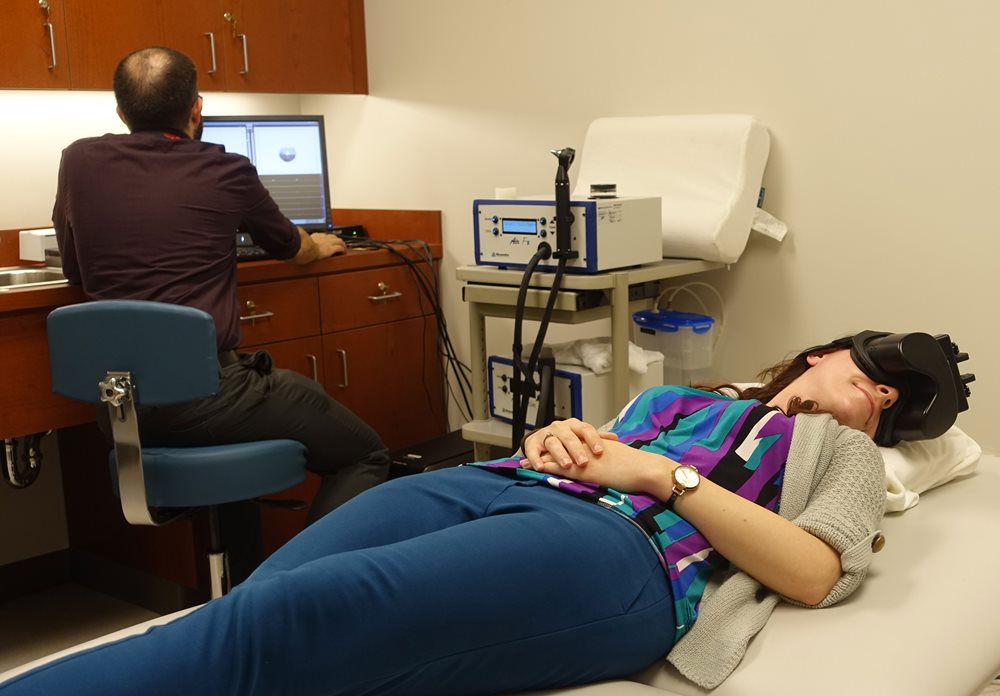What is a Balance Disorder?
 How the Balance System Works
How the Balance System Works
Our ability to stay upright while standing and to know where our bodies are in relation to gravity comes from our balance system, also called the vestibular system. Signals from the inner ear, eyes and sensory systems (such as the skin, joints and muscles) travel to the brain to control our balance.
The inner ear plays a large role in balance. It has three semicircular canals, containing fluid, that detect the head’s movements. Each semicircular canal handles a different directional movement of the head – side-to-side, up-and-down, and tilting from one side to the other. While the head moves, nerves communicate the body’s position and movements to the brain.
What is a Balance Disorder?
A balance disorder is a condition that causes someone to feel dizzy or unsteady for a certain period of time. Many balance disorders do not have a specific cause and may begin suddenly. Some medications, ear infections and head injuries may play a role in balance disorders. The risk of developing a balance disorder increases as you age.
How Do I Know if I have a Balance Disorder?
While most people experience occasional dizziness, those who experience it frequently or for extended periods of time should get a balance evaluation. Symptoms of balance disorders include: dizziness, vertigo (a spinning sensation), falling, having the sensation you may fall, feeling faint, blurred vision and/or confusion/disorientation. Additional symptoms may include: nausea, vomiting, diarrhea, changes in heart rate and blood pressure, and anxiety.
 How a Balance Disorder is Diagnosed
How a Balance Disorder is Diagnosed
Audiologists at the Pennsylvania Ear Institute (PEI) are experts in diagnosing and treating balance and vestibular disorders. Using some of the latest, technical equipment available, audiologists will perform various tests to properly identify balance disorders. Some of these tests are explained below.
Videonystagmography
A videonystagmograph is the most common test used to evaluate the vestibular system (the balance portions of the inner ear). This test examines a reflex that keeps vision focused as the head moves. During the test, the patient wears goggles with infrared cameras. These cameras record eye movements while watching lights, in different head and body positions, and when warm and cool water are introduced into the ear canals.
Rotational Chair Analysis
For this test, the patient sits in a computer-controlled chair that moves in circles and from side to side at various speeds. Their eye movements are recorded to evaluate the vestibular system.
Computer Dynamic Posturography
The patient is secured with a harness and stands on a platform. They must try to keep their balance as the platform moves. This test allows the audiologist to assess which areas of the balance system are causing the balance problem.
Dynamic Visual Acuity
This test evaluates the patient’s ability to maintain visual focus while moving their head. They will look at a specific object on a screen and shake their head “No” at various speeds. Keeping objects visually stabilized in the environment while moving is critical to maintaining balance and reducing the risk of falling.
PEI offers comprehensive balance evaluations for children and adults, using some of the country’s most specialized equipment. Following the evaluation, each patient will receive a personalized assessment and treatment instructions for their balance disorder.